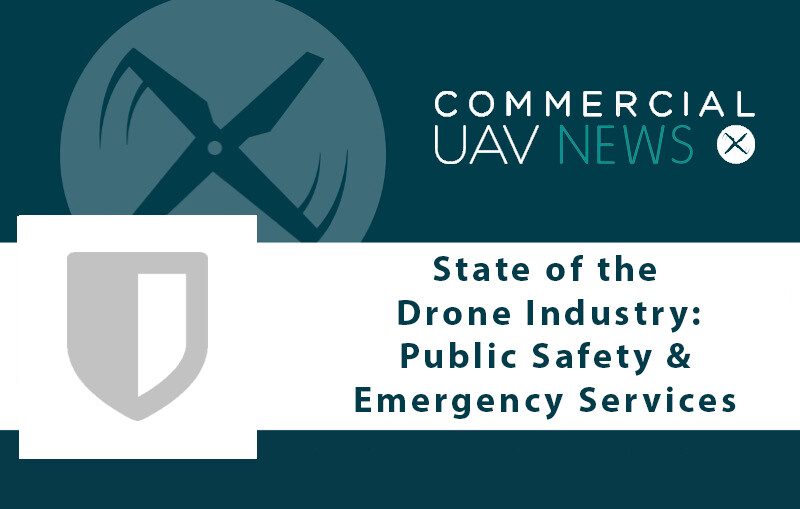The Commercial UAV News “State of the Drone Industry” series features insights and analysis from experts in the fields of inspections, agriculture, mining, energy, and more.
In the latest installment, Christopher Todd, Executive Director of the Airborne International Response Team (AIRT), discusses the public safety sector.
“Public safety agencies, by and large, have recognized that the capabilities offered by small, unmanned aircraft systems provide unique advantages to how they conduct their operations, and the use of drones in public safety will continue to grow,” Christopher Todd, Executive Director of the Airborne International Response Team (AIRT), told Commercial UAV News.
Last year, DRONERESPONDERS, an AIRT program that trains and supports public safety personal who use UAVs, introduced a comprehensive directory of public safety agencies that use drones in emergency response with the goal furthering coordination, training, and support. The dashboard contains more than 1,000 organizations, teams, first responders, law enforcement officers, firefighters, and pilots from more than 20 countries.
Given current trends, the size of that list is bound to grow. For example, last year, the Electronic Frontier Foundation cited a recent study finding that nearly 1,200 US police departments are using drones. The report predicted that more and more law enforcement agencies will incorporate drones in their work by drawing on federal grants, COVID-19 relief funding, and other sources.
Todd attributed the recent growth of the use of drones in public safety to functionality and cost. “Historically, less than 1% of public safety agencies could access manned aviation resources like helicopters and aircraft. They’re just too expensive,” he explained. “In recent years, though, many agencies have seen the value of reliable, low-cost, high-quality, small drones, and it’s changing the way many agencies operate.”
Those changes can be seen in the innovative ways public safety personnel are deploying the technology.
“Every month, we’re seeing new ways these systems are being used,” Todd stated. “For example, we recently heard about a fire department that was using drones to assess ice conditions to make sure ice fishermen and vehicles wouldn’t fall through the ice. We’re hearing more and more of these stories.”
On the horizon, Todd foresees other inventive applications for drones in public safety operations. “We could potentially use UAVs to transport cargo in disaster relief or mass casualty incidents,” he said. “Also, I could see using ‘drone swarms’ to help with different kinds of incidents. For example, instead of having one operator with a drone looking at a fire or monitoring a barricaded suspect, we could have a swarm of drones on each side providing live, situational intelligence.”
To fully unleash these innovations, however, Todd said that several changes need to take place. A major hurdle is standardization in training and certification.
“We don’t yet have formal training and certification standards for drone pilots in public safety,” he asserted. “A 107 is still a kind of benchmark for remote pilots, but then it’s up to specific agencies to create their own standard operating procedures and policies on how the aircraft will be moved. Then, they’ve got to train toward those standards in-house. That’s a challenge that we're still trying to work through in the industry.”
Funding presents another challenge. For example, more than half of the organizations responding to the AIRT+DRONERESPONDERS 2021 Public Safety UAS Survey reported that they relied on grants and donations to fund their UAS operations. The survey, which received responses from nearly 600 agencies from around the world, also revealed that the majority had UAS budgets below $10,000.
“The problem is that the funding of these programs has not kept pace with the demand,” Todd reported. “Too often, agencies are being asked to kind of bootstrap a program into existence. And because these are not manned aviation programs—you can go to your Best Buy and get one of these or order one quite easily—the use of drones for public safety maybe hasn’t been taken quite as seriously as it should be in some places.”
As a result, Todd said, some organizations are not allocating necessary funds to support training, maintenance, safety, and risk management.
“There’s still a lot of work to go on that,” he stated. “But from an overall public safety perspective, I think we’re in a good place—and it will get better.”















Comments